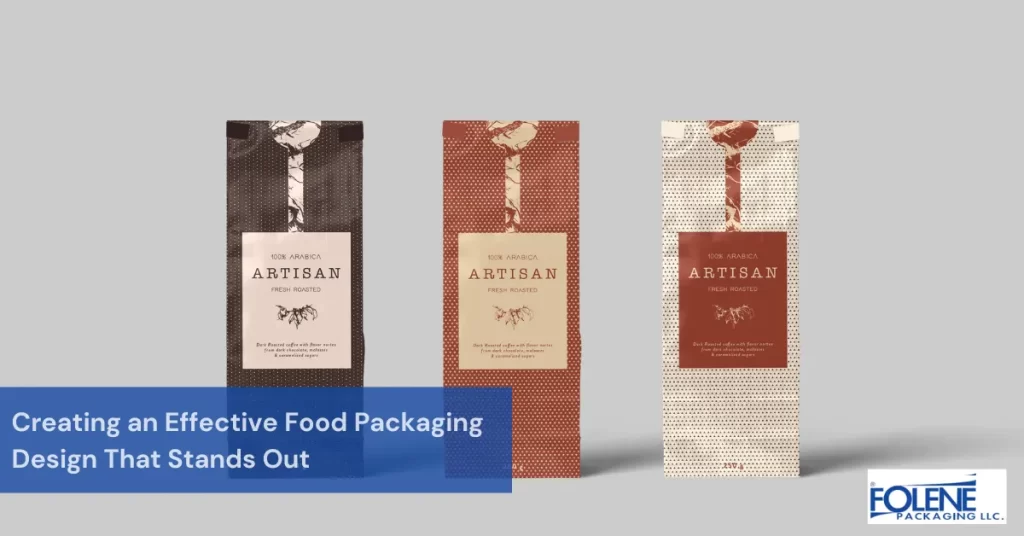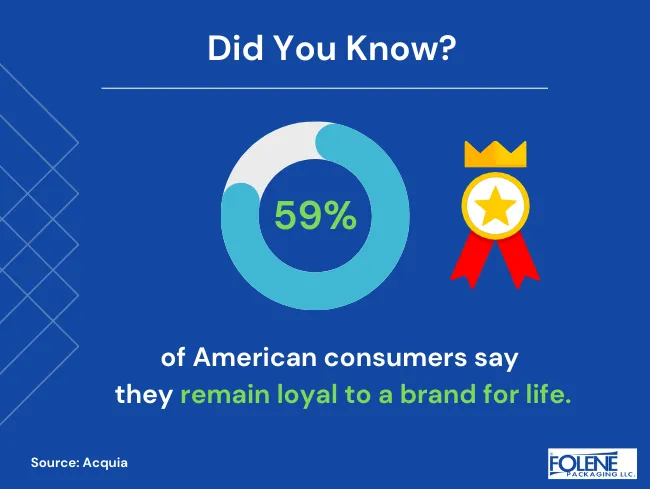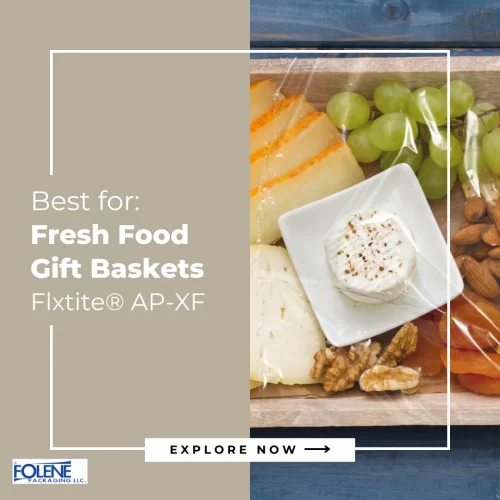
Food packaging design is a crucial aspect of the highly competitive food industry, as it directly impacts the brand strategy and customer perception of the product. Especially in today’s highly crowded market, it is essential to create a package design that stands out on grocery store shelves and attracts consumers enough to make the sale. Effective packaging design often incorporates unique shapes to attract attention, making products more noticeable and appealing to potential buyers.
A well-designed package can also improve the overall customer experience, encouraging brand loyalty, so customers return to the same brand and recommend it to friends and family, a key goal for businesses in the food industry. Creating functional packaging can enhance the cooking or eating experience, further solidifying customer satisfaction and loyalty.

The design process involves considering several factors, including the target audience, brand identity, packaging materials, and key principles of design, to create a packaging design that meets the needs of the product and resonates with consumers. Folene Packaging experts explore the elements of what makes a successful food packaging design.
Understanding Target Audience
Understanding the target audience is crucial in creating an effective food packaging design, as it helps to identify their needs, preferences, and behaviors, and create a design that resonates with them. For example, a children’s cereal brand has a very distinct target audience from a bespoke dairy product brand. Consequently, the food packaging for these products will need to be designed very differently to appeal to each respective audience.
Brand Identity in Food Packaging
Brand identity is also essential, as it reflects the values, mission, and personality of the brand. Is your brand healthful, organic, and non-GMO mindful? Or is your brand sophisticated, luxurious, and reminiscent of corporate gifting? Defining your brand identity helps differentiate it from competitors in the market.
For example, a brand that targets health-conscious consumers may use environmentally friendly packaging materials and highlight the nutritional benefits of their products, which can help to appeal to this target audience and create a positive brand image. Great food packaging can also transform a simple product into a beautiful gift, adding an element of surprise and delight for the consumer.
A strong brand identity can be achieved through consistent use of logos, color schemes, and typography, which can help to create a recognizable and memorable brand image, and make it more likely for customers to engage with the brand. Consistency is key, so using the same color, logo, material, and design elements throughout your packaging design makes it easier for loyal customers to spot and select your product on the shelf.
Applying Key Principles of Design to Food Packaging
The key principles of design are essential in creating effective food packaging design, as they help to create a visually appealing and cohesive design. Let’s explore each of these elements in more depth:

Balance refers to the arrangement of visual elements to create a sense of stability and harmony, which can help to create a positive and engaging brand image.
Contrast, on the other hand, refers to the use of different visual elements to create visual interest and draw attention to specific design elements, which can help to highlight key product features and benefits.
Emphasis refers to the use of visual elements to draw attention to specific design elements, such as the product name or logo, which can help to create a recognizable and memorable brand image.
Movement refers to the use of visual elements to create a sense of energy and dynamism, which can help to create an engaging and interactive brand experience.
Pattern refers to the use of repeated visual elements to create a sense of rhythm and texture, which can help to add depth and interest to the design.
Unity refers to the use of visual elements to create a sense of coherence and harmony, which can help to create a positive and engaging brand image.
White space, also known as negative space, refers to the empty space between and around design elements, which can help to create a clean and uncluttered design and make it easier for customers to focus on key product features and benefits.
Food Packaging Considerations
Food packaging considerations, including food safety, shelf life, and packaging materials, are critical in creating effective food packaging design, as they help to ensure that the product is safe for consumption and meets regulatory requirements. Depending on the packaging requirements of the food in question, certain packaging materials may be more suitable than others.
This is particularly true of food items requiring specific low-temperature packaging or items with non-barrier requirements. Food manufacturers must pay special attention to ensure that these details are considered in the packaging design decision to ensure a safe and appealing product.
Food Safety
Food safety is a top priority, and packaging design must ensure that the product is protected from contamination and spoilage, which can help to prevent foodborne illnesses and protect the brand’s reputation.
Shelf life is also an important consideration, as packaging design must ensure that the product remains fresh and safe for consumption throughout its shelf life, which can help to reduce waste and improve customer satisfaction. MAP packaging is a specialized method often employed to elongate the shelf life of food items- read more about it here.
Selecting Materials in Food Packaging Design
It is crucial to choose the right packaging materials for food packaging to ensure that they are safe, durable, and suitable for the product, which can help to prevent damage and contamination during transportation and storage.
For example, foods that require refrigerated or frozen storage conditions need packaging materials that can withstand these temperatures without compromising on form, function, or design. Flxtite® AP-XF shrink film was specially formulated to combat fogging in food packaging under refrigerated conditions. Frozen food packaging designed with Flxtite®AP-XF allows the customer full product visibility without compromising on food quality or safety.
Customer Convenience
Additionally, packaging design must also consider the convenience and ease of use of the packaging, which is why many manufacturers utilize perforated packaging to create “easy open” tabs for customer convenience.
Creating a Sustainable Food Packaging Design
Brands also need to consider the environmental impact of the packaging design they select. Consumers as a whole are more eco-conscious, particularly when it comes to packaging, so investing in alternative, eco-friendly materials, minimal-waste design, and reusable or high-PCR content packaging can help to create a positive brand image and positively impact sales. Sustainability is a major design trend in food packaging, reflecting the growing demand for environmentally responsible solutions.
Packaging Design Elements
Packaging design elements such as color, typography, and imagery play a vital role in creating effective food packaging that stands out on grocery shelves. These elements work together to communicate the brand’s message and values, evoke emotions, and capture consumer attention. Color can create visual interest and convey meaning, while typography adds personality and helps establish a recognizable brand identity. Imagery further enhances the design by evoking emotions and reinforcing the brand story.
Detailed designs often reflect the layers of taste of high-end food products, adding a sense of sophistication and quality. Consistency of these design elements with the overall brand visual identity ensures a cohesive and memorable packaging that not only attracts customers but also builds trust and loyalty, making excellent packaging design essential for success in the competitive food industry.
Measuring Design Effectiveness
Measuring design effectiveness, including sales, customer feedback, and market research, is critical in evaluating the success of packaging design, which can help to identify areas for improvement and optimize the design. Testing a new packaging design for customer reactions can help direct larger branding and product redesigns to promote branding and sales.
Customer feedback, including surveys and focus groups, can provide valuable insights into customer preferences and opinions. Incentivizing honest customer feedback about packaging design with special promotions can pay off in a big way with real-world customer data which you can use to optimize the design and improve customer satisfaction.
Sales data can also provide insight into the effectiveness of packaging design, including the impact on sales and revenue, which can help to evaluate the success of the design and identify areas for improvement. It is particularly important to monitor sales data during a testing period for a new package design, as a sharp increase or decrease in sales can be a strong indicator of viral success or the need to reintroduce some old packaging.
Market research, including competitor analysis and trend reports, can provide insight into industry trends and competitor activity, which can help to stay up-to-date with the latest developments in the field and identify areas for improvement.
Fun & Functional Food Packaging Design
Creating unique and effective food packaging design is a pivotal element in the competitive food industry, influencing brand strategy and customer perception. By understanding the target audience, establishing a strong brand identity, and applying key design principles such as balance, contrast, and unity, businesses can create packaging that not only stands out on store shelves but also enhances customer satisfaction and loyalty. Moreover, considerations around food safety, shelf life, and suitable materials must be accounted for to ensure product integrity and compliance with regulations.
For businesses looking to elevate their food packaging, Folene Packaging offers high-quality, sustainably focused packaging materials that align with both your brand’s identity and your customers’ values. Reach out to us today to discover how we can help you create standout packaging that resonates with consumers and drives sales.




